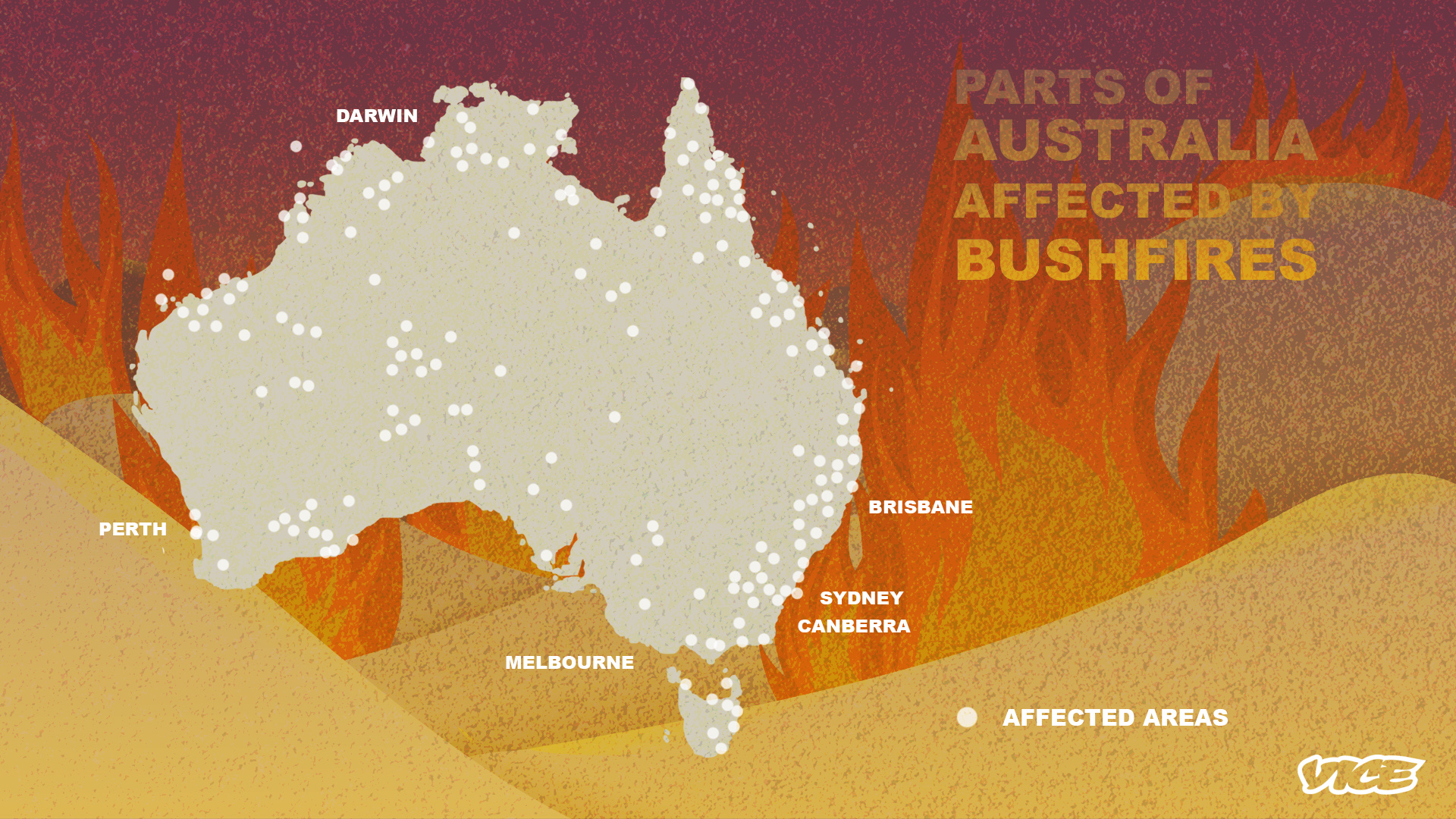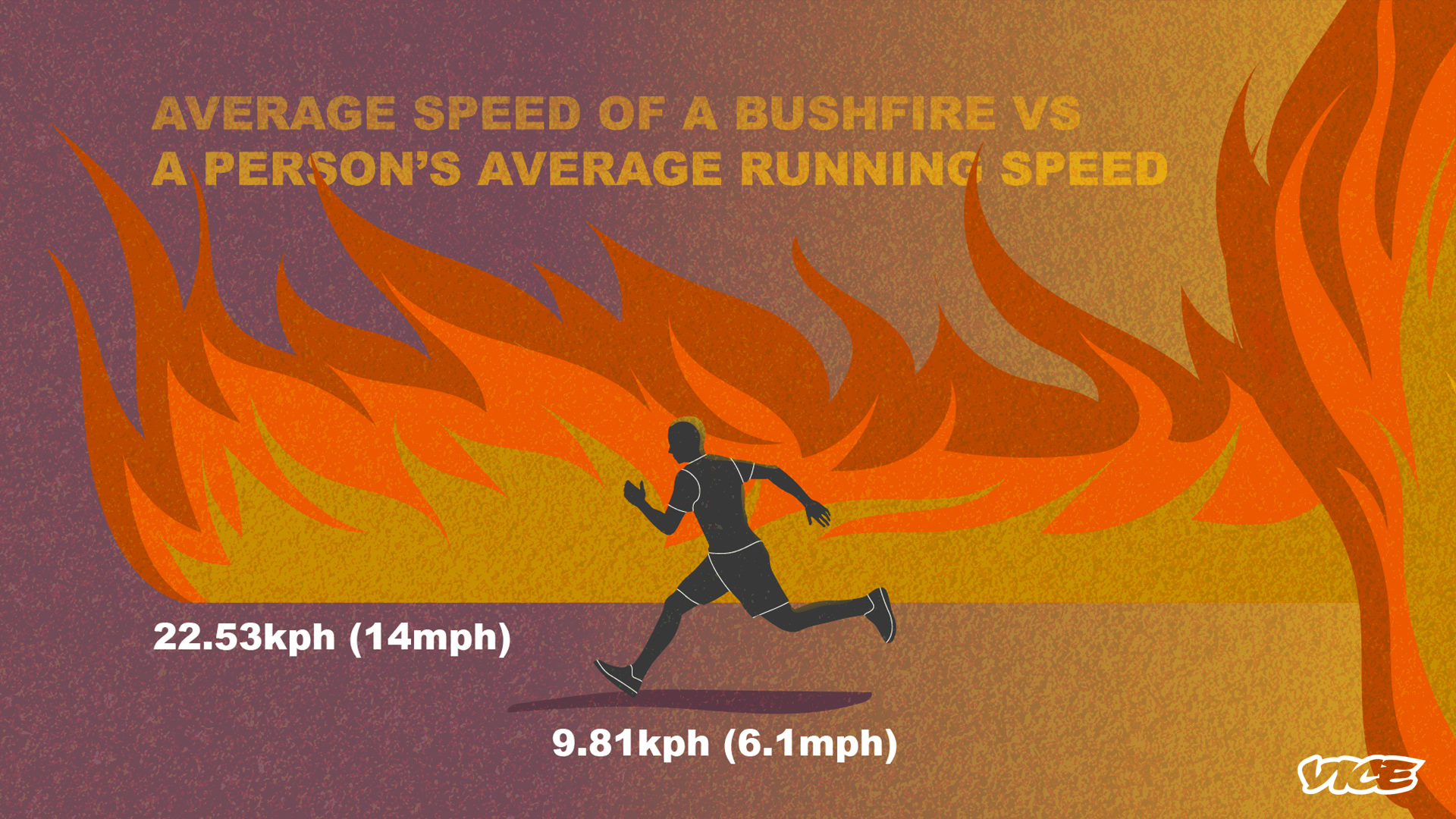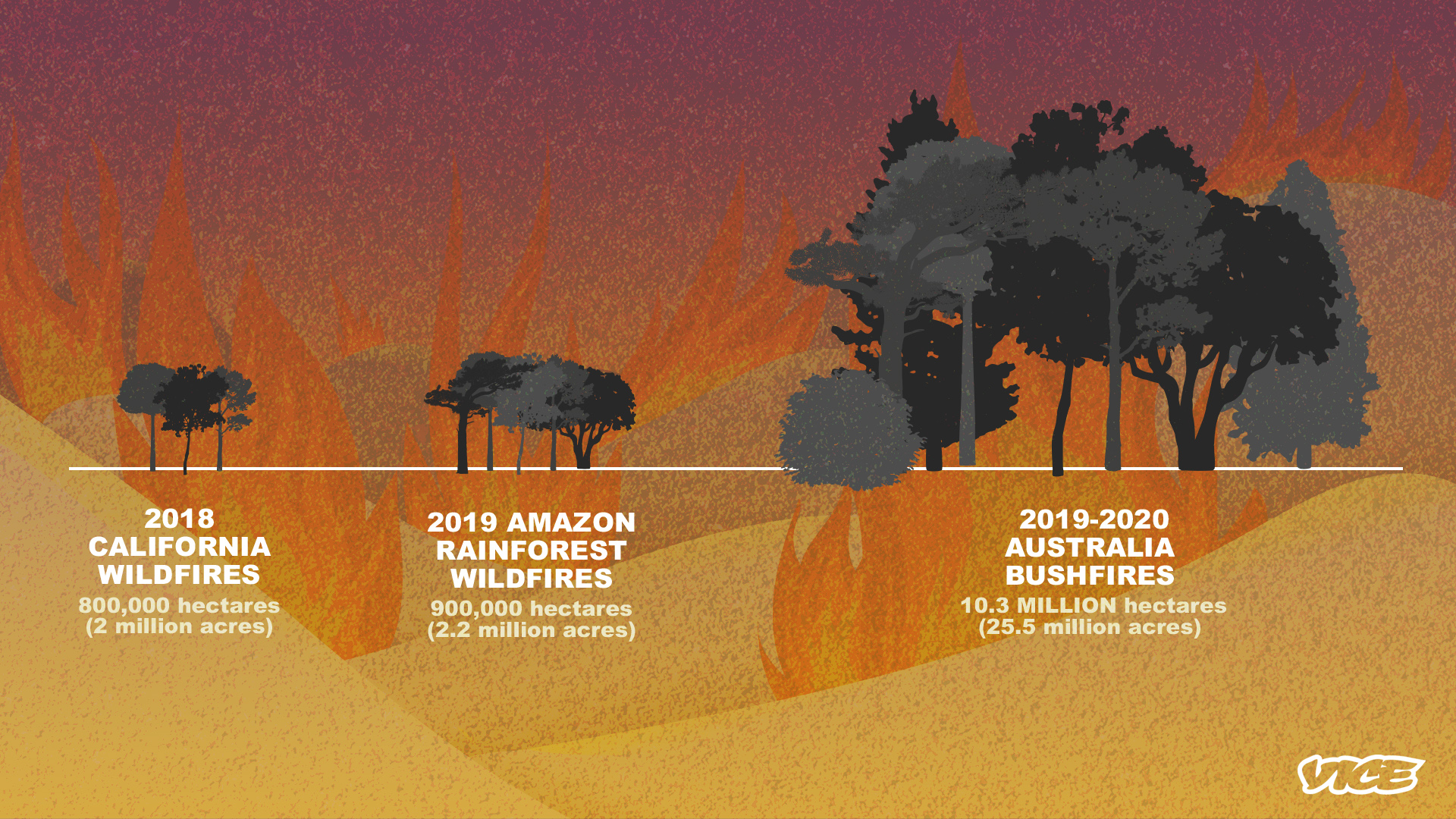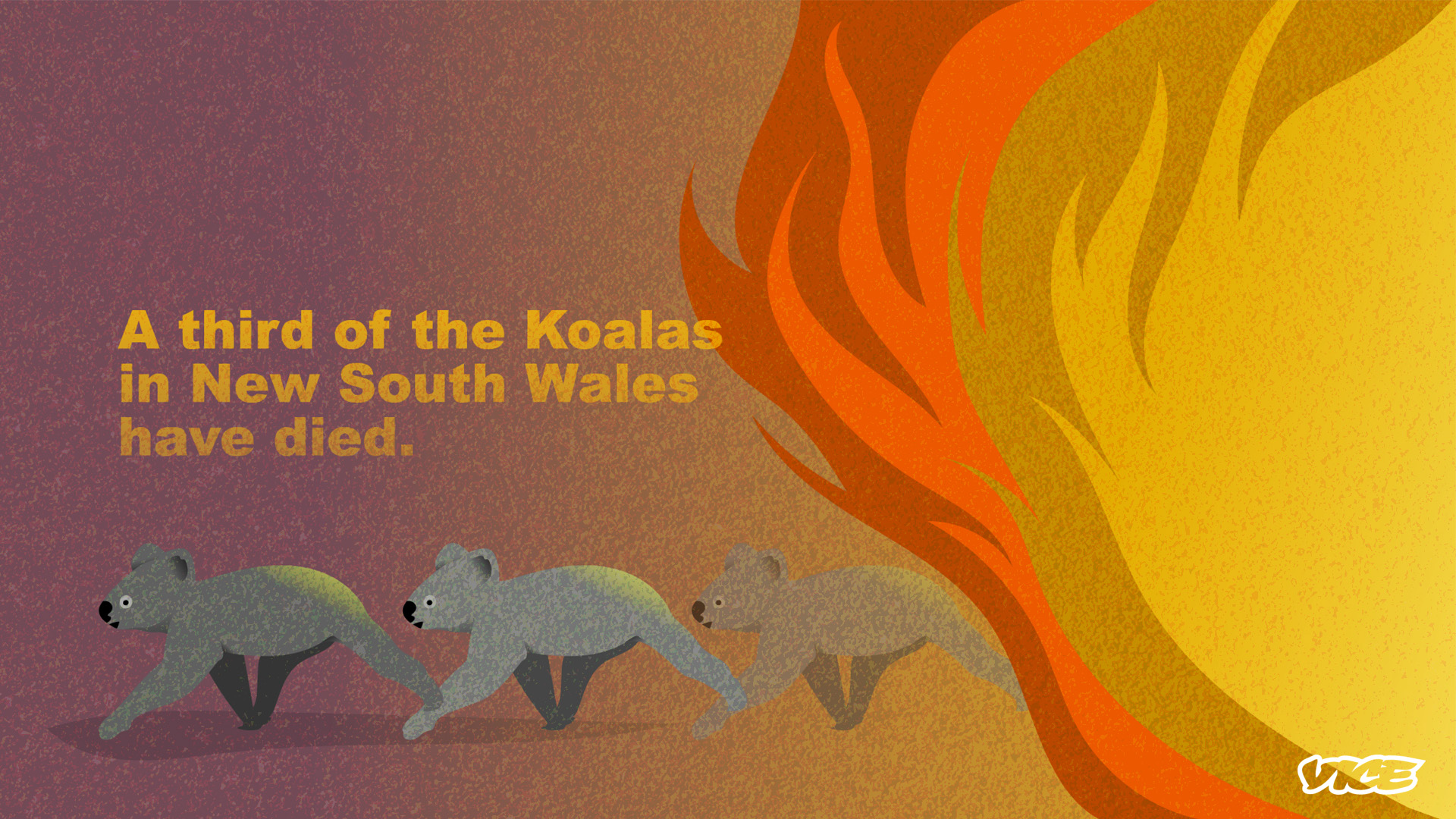Here Are Some Illustrations That Show Just How Bad Australia’s Bushfires Are
Credit to Author: Lia Savillo| Date: Fri, 10 Jan 2020 14:12:32 +0000
After months of severe drought and record-breaking temperatures fueled a series of unprecedented bushfires across southeast Australia, flames continue to ravage the nation.
As of writing, fires have killed people, destroyed homes, and damaged the natural habitats of the country’s unique wildlife, leaving many in danger. And according to experts, it looks like it won’t be put out any time soon.
The statistics are alarming, but it’s difficult to imagine exactly how bad the situation is based solely on numbers. And since pictures paint a thousand words, here are some that illustrate exactly what they all mean.

Bushfires spread fast

A bushfire rages at an average speed of 22.53kph (14mph). That’s two times faster than a forest fire, which is usually at 10.78kph (6.7mph). It’s much faster than most people can run — about double the average running speed (9.81kph or 6.1mph) — which is why it’s so dangerous. Bushfires usually spread faster depending on the humidity, topography, wind, and temperature.
Australia is getting hotter
The country broke its all-time temperature record twice in December last year. An average maximum of 40.9°C was recorded on December 17, which was topped just a day later when it hit 41.9°C. These both beat the 40.3°C record set in 2013. And it’s bound to get even hotter, as temperatures usually peak in January and February.
Just how hot is 40 degrees? The optimum air temperature for the body is between 18°C and 24°C, according to the World Health Organization. Research shows that 40°C is dangerous to human health as the body struggles to cool itself, and could lead to death. In 2003, during the European heatwave that killed 70,000 people, temperatures in some areas repeatedly reached 40°C.
More areas are damaged everyday
According to recent reports, more than 10.3 million hectares (25.5 million acres) of land have been burned across Australia since the bushfires started in September 2019. That’s about the same size as South Korea and around 10 million times the size of a FIFA-standard football pitch.

This is significantly higher than the damage done by the Amazon forest fires last year, which saw about 900,000 hectares (2.2 million acres) burned. The 2018 California wildfires, meanwhile, affected about 800,000 hectares (2 million acres).
The fires have killed people and animals
The fires have killed at least 25 people and destroyed over 2,000 homes.

An estimated one billion animals from Australia’s rich wildlife, including koalas, kangaroos, platypus, and cockatoos have been affected by the fires. Of this, about a third of the koalas in New South Wales have died.
Wildfire smoke is dangerous
Wildfire smoke contains poisonous gases such as carbon monoxide (CO) and fine particles known as PM2.5. When inhaled, this can harm virtually every organ in the human body.
Inhaling too much carbon monoxide displaces oxygen in the blood and deprives the heart, brain, and other vital organs of oxygen. Large amounts of CO can overcome you in minutes, without warning, causing you to lose consciousness and suffocate.
The World Health Organization recommends that the indoor air level for CO be below 25 ppm (one part of CO per million parts of air) for any one-hour period. Fires in buildings usually measure a level of 3000 ppm, what more a wildfire?
Thousands are on the ground to stop the fires
An estimated 2,700 firefighters, including volunteers, are now on the ground to stop the bushfires. That's about 40 percent of the firefighters in New South Wales, which has the fourth largest urban fire service in the world with close to 6,800 firefighters.
So far, at least three have died trying to help put the flames out. The Australia Defence Force also said on Sunday that it had called 3,000 army reserve forces, and others with capabilities, to help fight the flames. American firefighters have also flown to Australia to help stop the fires
Find Lia on Twitter and Instagram.
This article originally appeared on VICE AU.